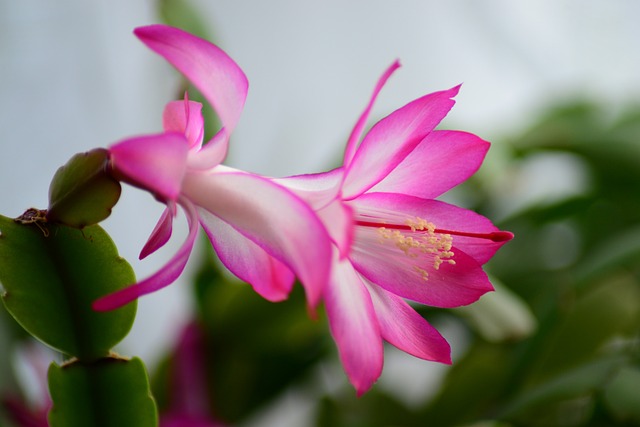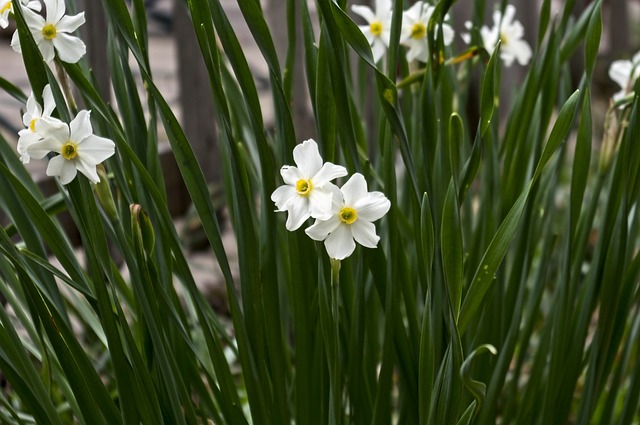Editor’s Note: Not quite sure what to do with those holiday plants? Jeff Cummins of the Cockrell Butterfly Center lends a few suggestions.
The winter holiday season has ended, the decorations are packed up for next year, the house is more or less back to normal, and we’ve [mostly] recovered from the festivities… but what about holiday themed plants that were either decoration or given to us by friends or family? Most of these plants are actually quite long-lived and can be kept and even re-bloom bigger and better next year with a little effort. Some are even suitable garden plants in the Houston area for those of us with suitable space in the yard.
Poinsettia

The most ubiquitous of the holiday plants, many of us end up with at least one of these plants each year. Either as a rescue from a holiday party, or an impulse purchase at the grocery store, we’re often left wondering what to do with it at the end of the season. They are actually quite easy plants to grow, but getting them to bloom by next Christmas can be challenging. These are tropical plants native to Mexico and Central America, so they love the warm and humid weather of Houston and can be grown outside in as semi-shaded area of the garden or patio with minimal care. It’s normal for them to lose their red floral bracts and turn into an inconspicuous green shrubby plant. Getting it to bloom is the tricky part… they require a distinct change in daylight (short days and long nights) as well as a reduction in water to trigger their bloom cycle.
If you’re feeling up to the task you can try a few steps to get your plant to bloom in time for the holiday season:
- Spring – once danger of frost has past, move the plant outside to a bright sunny area (some shade in the hottest part of the afternoon would be appreciated). Water and fertilize regularly to encourage lush healthy growth.
- Midsummer – prune the plant back by about ½. This will encourage a fuller and bushier growth habit. Continue to water and fertilize regularly.
- Fall – around the time of the fall equinox (usually September 21st) it’s time to move start reducing the amount of light the plant receives. This is crucial to get it to bloom! The plant must have a minimum 16 hours of uninterrupted darkness every day. Either by moving into a closet, under a box, or somewhere light won’t reach the plant. The rest of the day the plant should be in a bright sunny area.
- Thanksgiving – at this time you can discontinue the short day/long night treatment. Move the plant to a bright area with as much light as possible. Allow the plant to dry between watering and discontinue any fertilizer.
- Christmas – hopefully if all has gone according to plan the plant should be in full bloom once again!
Christmas Cactus
These are popular holiday plants, and for good reason. They’re pretty easy to grow, long-lived, and are stunning when in bloom. What we call “Christmas Cactus” are a group of hybrids and species of cactus in the genus Schlumbergera. Native to Central and South America, these cactus usually grow as epiphytes in nature, meaning they grow on trees (or sometimes rocks) in the canopy of forests, much like orchids or bromeliads do. It’s important to keep this in mind when growing them as houseplants because mimicking their natural environment will encourage a healthy plant that will grow and bloom better each season.
In the spring when new growth starts to appear is a good time to repot these plants. Choose a pot that is no more than 2 inches wider than the pot that it is already in. These plants like to be confined and are more prone to rot if “over potted” in a large pot. I recommend a clay pot as it dries faster and the porous material allows the roots of the plant to breathe a little better than in a plastic pot. Regular potting mix is fine, but adding a little more perlite can help the mix drain water faster and allow more air around the roots.
Keep them in a very sunny window with as much light as possible, or better yet they can be kept outside during the warmer months in a partial shade (morning sun afternoon shade) area. Although a cactus, it’s important to remember to water these plants regularly. When the soil feels dry to the touch, it’s time to water them. They are tolerant of drying out completely, but will grow best if not allowed to sit too dry for too long.
Like the poinsettia above, it’s the change in daylight and temperature in the fall that triggers these plants to bloom, though not nearly as strict. Fall nights with around 14 hours of darkness and cooler temperatures are sufficient. If growing them indoors it might help to move the plant outside at night, if possible. Cool night temperatures (in the 50s or 40s) will force the plant to start producing flower buds.
Overall these are very easy plants to grow and reward us with bigger and better blooms each year.
Paperwhites
Paperwhites are a type of daffodil native to the southern Mediterranean region of Europe, the Middle East, and northern Africa. The large yellow trumpet types of daffodil that most of us are familiar with don’t grow well in the Houston area as our summers are too hot and our winters are too mild and short for them to thrive, but paperwhites can actually do quite well in our gardens if a few conditions can be met. The most important thing to consider for them is good drainage. These plants come from regions with cool wet winters and hot dry summers. Our climate can offer the cool and wet winter, but our summer rains can cause the dormant bulbs to rot.
Its best to plant these in the garden as soon as possible after the blooms have faded. The leaves will stay green and continue to grow through the winter and early spring. This is essential for the plants to bloom the next year because it will store the energy produced by the leaves for the next season. Plant them in full sun. In late spring the leaves will begin to turn yellow. This is normal and a sign that the plant is going dormant for the hot summer months. It’s important NOT to cut the leaves back until they have completely died back to the bulb.
If planted in the right spot these plants will begin to sprout again in the winter months and flower bigger and better each year in the very early spring, usually mid-February.
Amaryllis

These are my favorite of the holiday plants, and probably the easiest to grow. Belonging to the genus Hippeastrum, these are mostly hybrids from species native to South America. The “true” Amaryllis is actually a completely different plant native to South Africa sometimes called a Belladonna Lily. Although native to tropical and subtropical areas of South America, these plants thrive in Houston gardens and can often be seen blooming en mass in older neighborhoods around town. They are fully hardy in our winters and even the occasional hard freeze won’t harm them.
It’s best to plant these in the garden in the spring, once danger of frost has past. Although hardy, a freeze will kill the leaves that sprout from the bulb after the flowers have faded. This won’t kill the plant but could set it back a bit. These plants do best in a partly shaded area with sun until about midday and shade the rest of the afternoon.
These are very long-lived plants that will bloom each spring, usually around Easter.
For more from the Cockrell Butterfly Center, click here.








